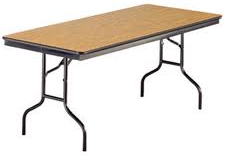This week I got an invitation, from someone I respect—who I’ll call Gene—to attend a telesummit where she was speaking on a topic of interest to me.
I clicked through using the link in her email.
The first time I clicked it, the link was just wrong. It went to the website of the woman holding the event (not to Gene) where I couldn’t find anything about the telesummit.
So I wrote to Gene and asked.
She sent a new email to me and everyone else on her list (appropriately by blind copy) with the correct link and an apology. (Great. Thanks.)
Finally I got to the home page of the event which bragged:
AND! IT’S ABSOLUTELY FREE
After entering my contact info, I got the standard message to confirm my request.
No problem.
But no confirmation came.
I signed up three times before I got the confirmation email.
I dutifully accepted that and jumped to the page about the event where:
I find more more crap about what’s coming.
(Notice I’m getting a bit perturbed?)
But still no schedule.
No idea what the speakers are talking about.
No info about how to call in and listen.
No nothing.
EXCEPT a place to sign up and PAY.
(Do you think she thought I missed that part above about: ABSOLUTELY FREE?)
I checked my email again and found a new email from the event leader with a link to the “details” for the summit. (Finally.)
In her defense, it did include the dial-in info, dates and general times of the calls. But it did NOT include the times of each talk.
It was just a list of the speakers, with their lovely pictures, bios and links to their webpages. And STILL NO SCHEDULE.
Boy, this woman lost my interest (i.e. respect) in what she’s presenting and then too, by association, have the rest of the speakers.
![]()
Now I know I’m just getting pissy here. But let me look past the general event problems to general site problems. (I am, after all, a web developer!)
Some of the speakers’ bios have bold words, some do not. Some include logos, others do not. It looks very haphazardly put together.
Each of the speaker’s bio blocks had their name at the top, as would be expected. But the names were all underlined like they are links. And they are not links.
Underlining is NOT NECESSARY on the web (unless you’re using it to show a link).
It does NOT make people pay more attention.
In the very dark ages when we used typewriters, underlining (or all CAPS) was the only way you could make text stand out. And it was a pain to add to the copy. But now you can use different colors, or fonts, or weight to show importance.
![]()
Look, I absolutely understand that mistakes happen. I do not mean to be hypercritical here. But there are so many problems with this invitation that it leaves my trust bucket with a big hole in it.
If I were a speaker in the event, I know I’d be pissed.
A BIG part of putting together an event is paying attention to hundreds of details.
Testing links and checking content for consistency are a huge part of what gives a person credibility on the internet. If you can’t get the details of your own project straight, why should I trust you with my time or money?
You can’t do it quickly unless you were somehow born knowing how to do it. And that takes a LOT of experience.
Get someone to test your links, to step through your steps. Ask someone new (NOT the person who wrote the content) to read it all and see if it makes sense.
How do you insure that you don’t make too many mistakes?
(and, for you, what exactly are “too many?”)
If you’ve got other ideas, please share them in the comment section below. I’m always looking for ways to strengthen my technique.
(PS: I will still be attending Gene’s talk. I still want to know what she has to say. But I surely will not be trying to figure out what any body else is talking about. It’s just too hard!)

 Why do taglines freak people out?
Why do taglines freak people out? I just got hit with the Conduit virus.
I just got hit with the Conduit virus. SEO is not about tricking some system into finding you, it’s about writing good content with real connection to specific key words.
SEO is not about tricking some system into finding you, it’s about writing good content with real connection to specific key words. even do. But I’m guessing that your “To Be Read” file is at least twice as big as it needs to be.
even do. But I’m guessing that your “To Be Read” file is at least twice as big as it needs to be.
 I have been following a conversation about hate mail: what to do with it, how to mentally process it and how to get over it.
I have been following a conversation about hate mail: what to do with it, how to mentally process it and how to get over it. If you’re looking at a cloudless blue sky and somebody says you’re a jerk for not seeing that it is, in fact, black as night, again: Laugh it off.
If you’re looking at a cloudless blue sky and somebody says you’re a jerk for not seeing that it is, in fact, black as night, again: Laugh it off.
 WeFixBrokenWebsites is a small company. Really it’s mostly just me. I have some colleagues who I trust to help when I can’t figure something out. But if you work with me, you’ll work with me. I answer the phone when you call. I read your emails. And if something’s not right, I fix it.
WeFixBrokenWebsites is a small company. Really it’s mostly just me. I have some colleagues who I trust to help when I can’t figure something out. But if you work with me, you’ll work with me. I answer the phone when you call. I read your emails. And if something’s not right, I fix it.
